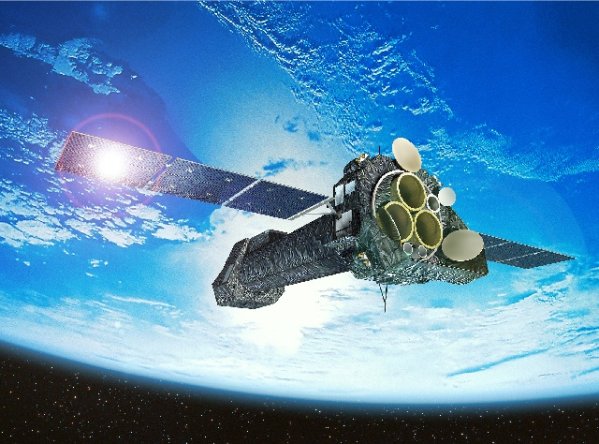
XMM-NEWTON was launched on 10th December 1999 by the first commercial Ariane-V launch. It is one of the European Space Agency's cornerstone missions and was designed to be a satellite which could perform high quality and high sensitivity X-ray spectroscopy. At one end of the satellite there are the detectors and flight systems and at the other there are the mirrors and they are connected by a 7.5 meter long tube. There are three different mirror systems which each have their own detectors. One is the EPIC "pn" camera; the other two have Reflection Grating Spectrometers behind them, but the X-rays can be focused onto the EPIC "MOS1" and "MOS2" cameras instead. The satellite also has an UV-Optical telescope which can take images at the same time as the X-ray cameras. Each mirror module consists of 58 nested gold coated mirrors, with the largest having a diameter of 0.7 m.
 |
| Artists impression of XMM-NEWTON in orbit. (Image courtesy XMM-NEWTON) |
The satellite has lower spatial resolution than CHANDRA but has a larger collecting area and the spectral resolution is also much better. The detectors are cooled to -90 and -130 C, for the "pn" and "MOS" cameras respectively, in order to get the best sensitivity out of them. These detectors, like those in CHANDRA, can record the time, location on the sky, and energy of an incident photon
For more see the XMM-NEWTON website, http://xmm.vilspa.esa.es/
BACK: X-ray Satellites UP: X-ray Satellites NEXT: CHANDRA